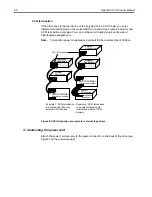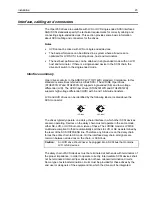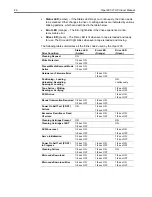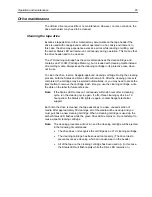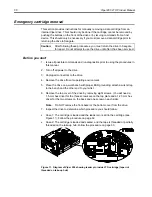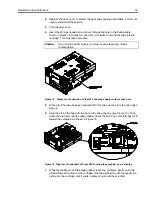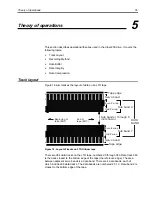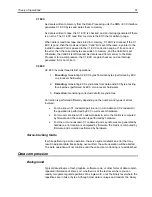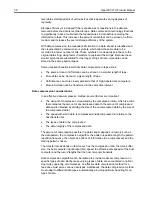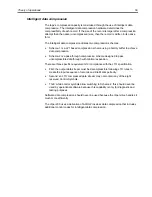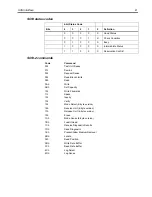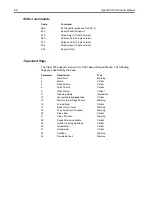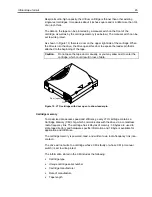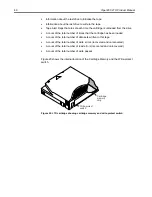
36
Viper 200 LTO Product Manual
A
track group
is a set of tracks that is recorded concurrently. The sets of 12 data
tracks in a data band are data sub bands. There are 8 data sub bands per data
band. The data tracks are accessed in a serpentine manner.
A
wrap
is a track group recorded in the physical forward or physical reverse
direction. The wraps are recorded in a serpentine fashion starting in data band 0.
The tape contains 48 track groups, 24 written in the forward direction and 24 written
in the reverse direction. Even-numbered wraps are recorded in the forward direction
(BOT to EOT), and odd-numbered wraps are recorded in the reverse direction (EOT
to BOT).
Recording method
The Viper records data using write-equalized (1,7) Run Length Limited (RLL) code.
RLL (1,7) Data bits are defined as follows:
•
A ONE is represented by a flux transition at the center of a bit-cell.
•
A ZERO is represented by no flux transition in the bit-cell.
Data buffer
In its default configuration, the Viper has a 32-Mbyte buffer. The SDRAM controller
has a burst transfer rate of 320 Mbytes/sec, and utilizes bank switching to achieve a
maximum average bandwidth of nearly 240 Mbytes/sec. This is needed to support
data compression in the case of compressible data being transferred from SCSI at
80 Mbytes/sec.
Data integrity
The mechanical and electrical design of the drive ensures that drive performance
does not degrade over its operating life. Changes in head alignment, head wear,
component drift, and other factors are minimized to ensure that data integrity and
interchange capability are not compromised over the drive's operating life.
The Viper’s uncorrectable error rate is less than 1 hard error in 10
17
bits. The drive’s
undetectable error rate is 1 in 10
27
bits read.
Error-correction code (ECC)
The use of Cyclic Redundancy Checking (CRC), two-level orthogonal Error
Correction Coding (ECC) provides a very low probability of encountering a hard
error. During the read process ECC correction is performed on-the-fly without
affecting tape streaming.
There are two levels of Error Correction Coding (ECC). These two levels are
orthogonal – that is, an ECC codeword at one level will intersect ECC codewords at
the other level just once, which means that there will be only one common symbol
between them. The two levels are called C1 and C2.

